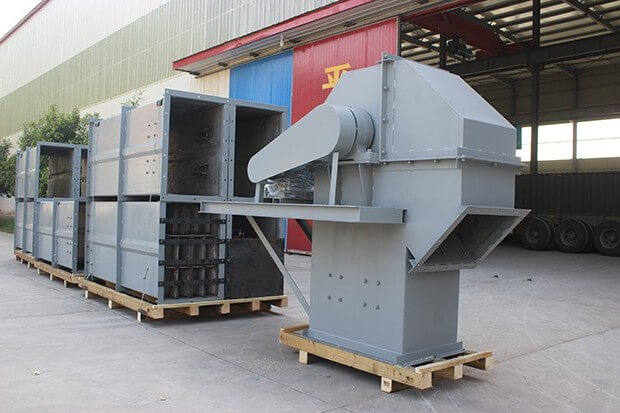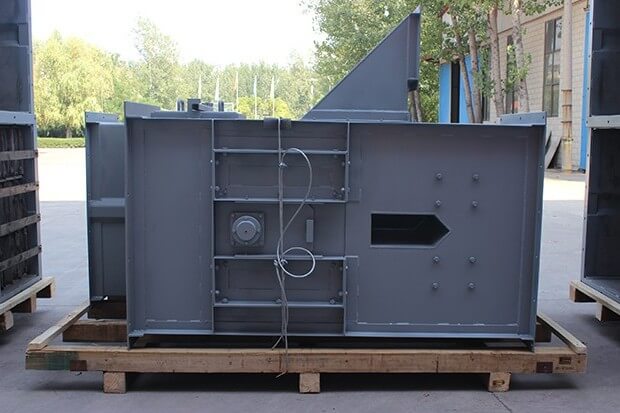Installation and Commissioning Instructions of Plate Chain Bucket Elevator

1. Installation Instructions of
Plate Chain Bucket Elevator
NSE series plate chain bucket elevator is vertical type, its foundation bears all equipment weight, so it is necessary to inspect the foundation before installation. The equipment is generally field installation by the end user. The erection sequence is as follows:
1) Firstly, install anchor bolts on the foundation, then boot section. Make sure the relative position on the foundation for boot section is adjusted well, the datum level (upper flange surface) of casing is in the horizontal plane. After that, to tighten the boot section onto the foundation temporarily.
2) To install intermediate sections one by one above boot section. Generally the section with inspection door is mounted as the first intermediate section.
3) After the erection of intermediate section, to install head section of plate chain bucket elevator. In general, supporting device should be installed in the position of head and intermediate sections, which is to prevent lateral offset of casings. The supporting device should be reliably fixed on to the surrounding building. Also the asbestos tape or rope should be placed between the flange connections to avoid ash flying.
4) The drive device should be mounted on the head section.
5) To install operating components, such as plate chain and buckets.
6) Finally, install left and right head protective guards, set electrical protection switches, and connect the power line to motor.

2. Non-load commissioning instructions of Plate Chain
Bucket Elevator
1) Pay attention to the running conditions of bucket, plate chain and sprockets. The moving parts should not collide with or get stuck in other fixed parts.
2) Inspect whether bearing oil temperature is normal, lubrication and sealing are good. After two-hour running, the temperature rise of bearings should not exceed 60℃
3) Inspect whether gearbox has abnormal sound and oil leakage, coupling is safe and reliable, electrical control is normal. No-load power should not exceed 35% of rated power.
4) Observe the backstop device carefully, and confirm whether its separation and mesh are reliable in the running process.
5) Inspect whether all fasteners are loose, and pay special attention to the fastening condition of fixing bolts between bucket and plate chain after equipment shutdown.
6) When the result of non-load commissioning is determined as qualified, 16-hour load test should be made.

3. Load commissioning instructions of Plate Chain Bucket Elevator
1) Load commissioning should be made in the condition of rated capacity and design conveying material. The first observation is to check the working condition of drive device, whether the current exceeds the rated value, electrical control is normal, and noise condition of gearbox.
2) Inspect the working conditions of head and boot sections, and confirm whether two chains are
synchronous, buckets are askew, velocity meets the requirements.
3) Pay attention to material feeding situation, and confirm the boot section of plain chain bucket elevator doesn't have plugging phenomenon.
4) Observe the filling degree of buckets to check whether the capacity meets the design requirements.
5) Repeatedly shutdown the running of plate chain bucket elevator to inspect the effect of backstop device.
When all the defects of equipment are eliminated, and the load commissioning is determined as qualified, plate chain bucket elevator can be shifted into production.
PK Machinery is a professional manufacturer of vibrating screen, screw conveyor, belt conveyor, bucket elevator and scraper conveyor, further information, please click:
www.pkmachinery.com.

 1. Installation Instructions of Plate Chain Bucket Elevator
1. Installation Instructions of Plate Chain Bucket Elevator
